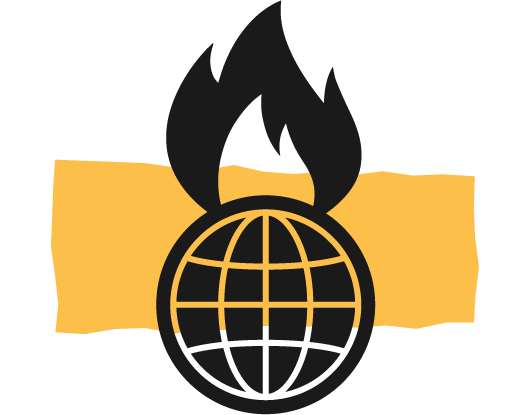The World Scientists' Warning to Humanity.
What are the Warnings?
Back in 1992 the first Warning to Humanity was issued. It was a call to action that was signed by over 1,700 scientists, including 104 Nobel laureates, from 71 countries.
There have been a further two Warnings; one in 2017, signed by 15,364 scientist from 184 countries, and a Third Warning in 2019 signed by 11,258 scientists representing 153 countries.
We use these Warning as the scientific foundations for our climate actions, they guide what we do and drive the urgency of our demands.
We listen to the science, and we have been warned.
UPDATE: A Forth Warning to Humanity.
In November 2021, during the COP26 Climate Conference, Scientists Warning Europe issued a fourth Warning. This Warning provides a framework for climate action and is called "Scientists’ Warnings into Action".
The six key stressors.
Six interrelated steps have been identified by the World’s Scientists.
These are areas that we are campaigning governments and policy makers to act upon.
Below are extracts from the Scientists Warning to Humanity papers.
Food.
“Eating mostly plant-based foods while reducing the global consumption of animal products, especially ruminant livestock, can improve human health and significantly lower GHG emissions. Cropping practices such as minimum tillage that increase soil carbon are vitally important. We need to drastically reduce the enormous amount of food waste around the world.”
Pollution.
“We need to promptly reduce the emissions of short-lived climate pollutants, including methane (figure 2b), black carbon (soot), and hydrofluorocarbons (HFCs). Doing this could slow climate feedback loops and potentially reduce the short-term warming trend by more than 50% over the next few decades.”
Population.
“The world population must be stabilised—and, ideally, gradually reduced—within a framework that ensures social integrity. These policies make family-planning services available to all people, remove barriers to their access and achieve full gender equity, including primary and secondary education as a global norm for all, especially girls and young women.”
Sustainable Economy.
“Excessive extraction of materials and overexploitation of ecosystems, driven by economic growth, must be quickly curtailed to maintain long-term sustainability of the biosphere. Our goals need to shift from GDP growth and the pursuit of affluence toward sustaining ecosystems and improving human well-being by prioritising basic needs and reducing inequality.”
Energy.
“The world must quickly implement massive energy efficiency and conservation practices and must replace fossil fuels with low-carbon renewables and other cleaner sources of energy if safe for people and the environment. We must swiftly eliminate subsidies for fossil fuels and use effective and fair policies for steadily escalating carbon prices to restrain their use.”
Nature.
“We must protect and restore Earth's ecosystems. Phytoplankton, coral reefs, forests, savannas, grasslands, wetlands, peatlands, soils, mangroves, and sea grasses contribute greatly to sequestration of atmospheric CO2. Marine and terrestrial plants, animals, and microorganisms play significant roles in carbon and nutrient cycling and storage.”





